Is "Strong Curiosity" and "Pursuit of Knowledge" the Key to Japanese Content's Global Reach? ~Global Content Survey: China & Korea Edition~

Japanese character content, such as anime and games, is gaining popularity worldwide. With video streaming services now firmly established, Japanese content has become more accessible in more countries than ever before.
To leverage Japanese character content and uncover new business opportunities, Dentsu Inc. and Dentsu Macromill Insight, Inc. jointly conducted the "Global Content Survey" from late 2020 to early 2021. Analysis of the results revealed differing trends in popular character content across countries, along with the reasons behind these differences.
This series will introduce the survey findings while incorporating insights from employees with overseas posting experience. We will delve into cultural differences across countries and the background behind the popularity of Japanese content and characters.
Part 1 explains the overall trends revealed by the survey results and the trends in China and South Korea, where I, the author, spent a total of five years on assignment.
Detective Conan is popular in China, while Doraemon and NARUTO are popular in South Korea and Southeast Asia, and Pokémon is popular in the UK and US.
This survey analyzed the popularity of "content (manga, anime, works)" and "characters (those with various merchandise and extensions)" by conducting questionnaires and analyzing items such as recognition and image.
[Figure 1] Manga/Anime Awareness Rankings by Country
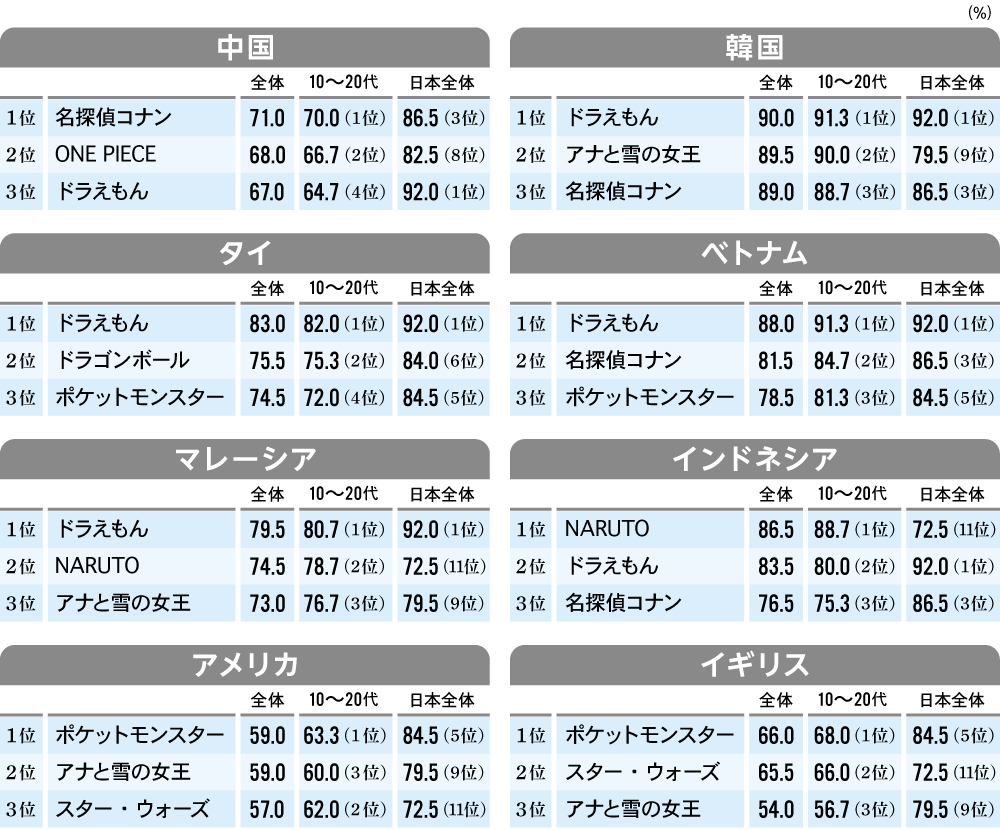
These survey results reveal that Japan's content presence is growing globally, driven not only by TV broadcasts but also by the development of various video streaming services and increased content expansion.
While popular overseas content was also included as options alongside Japanese content in this survey, Japanese content ranked first in awareness across all eight surveyed countries. Notably, the most recognized content by country is: "Detective Conan" in China; "Doraemon" and "NARUTO" in South Korea and Southeast Asia; and "Pokémon" in the UK and US (though "Frozen" tied for first overall).
"Detective Conan" enjoys broad recognition not only through TV broadcasts and online streaming but also via theatrical releases worldwide. "Doraemon" has been translated into languages worldwide since the Showa era, maintaining its manga and anime popularity. "NARUTO," set in a ninja world yet incorporating a modern worldview, is also translated globally and cherished by fans. "Pokémon" began as a game, expanded into anime, and even had a Hollywood live-action film adaptation, further broadening its content reach.
Popular characters in China, South Korea, and Vietnam include "Crayon Shin-chan"
[Chart 2] Character Recognition Rankings by Country

Crayon Shin-chan enjoys high recognition in China, South Korea, and Vietnam. Its content power is such that it ranks first, surpassing overseas content like Mickey Mouse and Spider-Man. In China, "Ultraman" is also popular. In other countries, "Spider-Man" (ranked 1st in Thailand, Malaysia, and Indonesia) is popular, while among Japanese content, "Hello Kitty" (ranked 3rd in South Korea and Indonesia) and "Mario" (ranked 1st in the US, 2nd in Vietnam, and 3rd in the UK and Thailand) are highly popular.
Japanese content garners support for its high level of "originality"
[Chart 3] Age-Specific Recognition of Major Content/Characters in China and South Korea
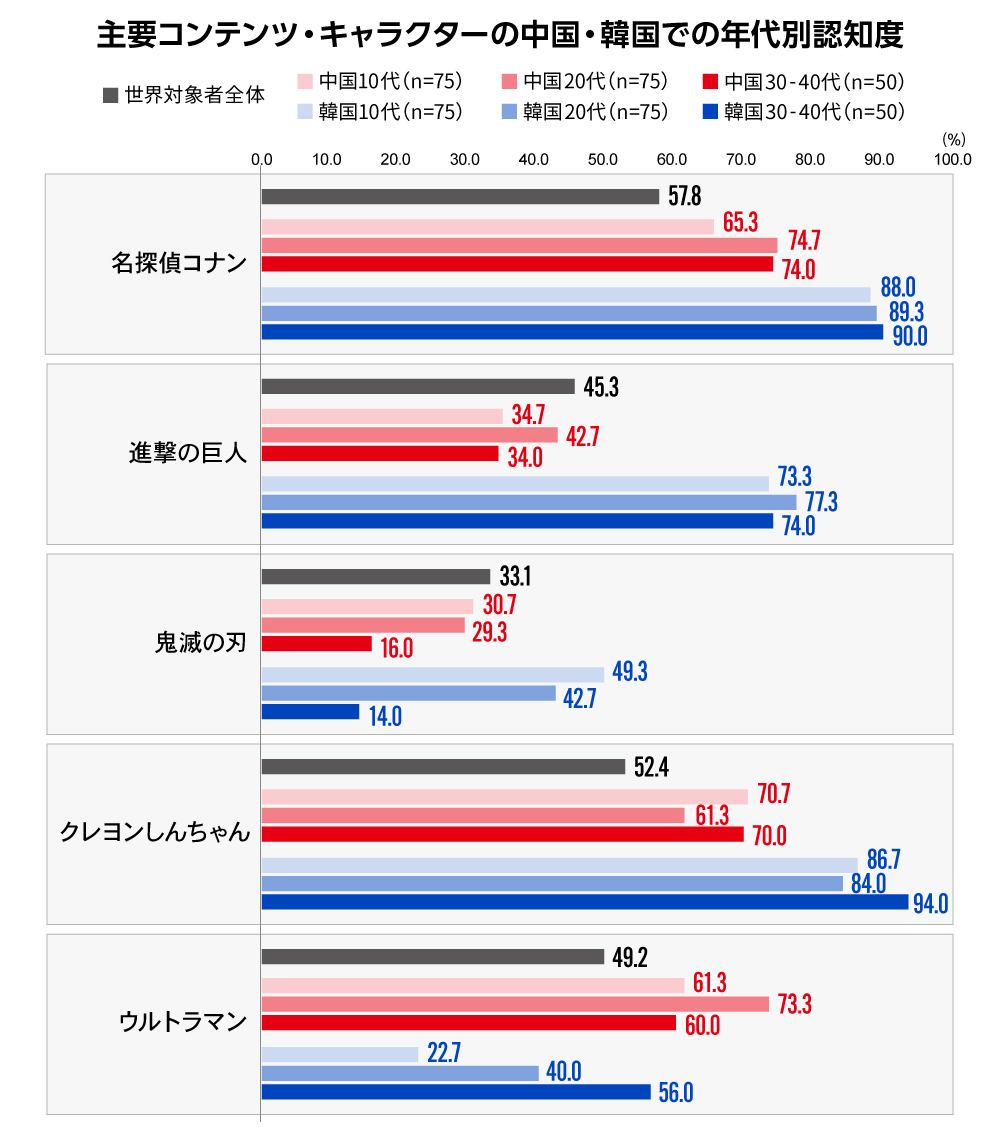
[Chart 4] Image Chart for "Detective Conan" in China and South Korea

[Chart 5] Image Chart for "Attack on Titan" in China and South Korea

[Chart 6] Image Chart for "Demon Slayer: Kimetsu no Yaiba" in China and South Korea
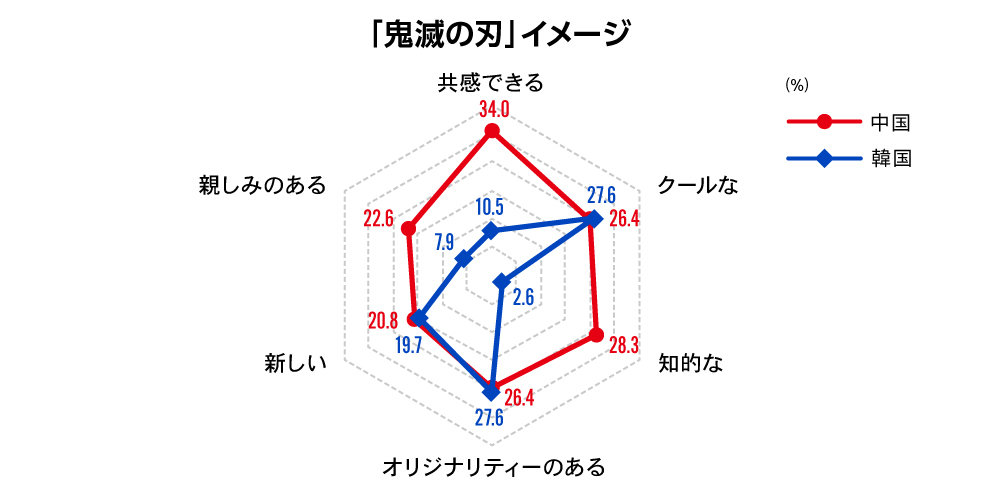
[Chart 7] Image Chart for "Crayon Shin-chan" in China and South Korea
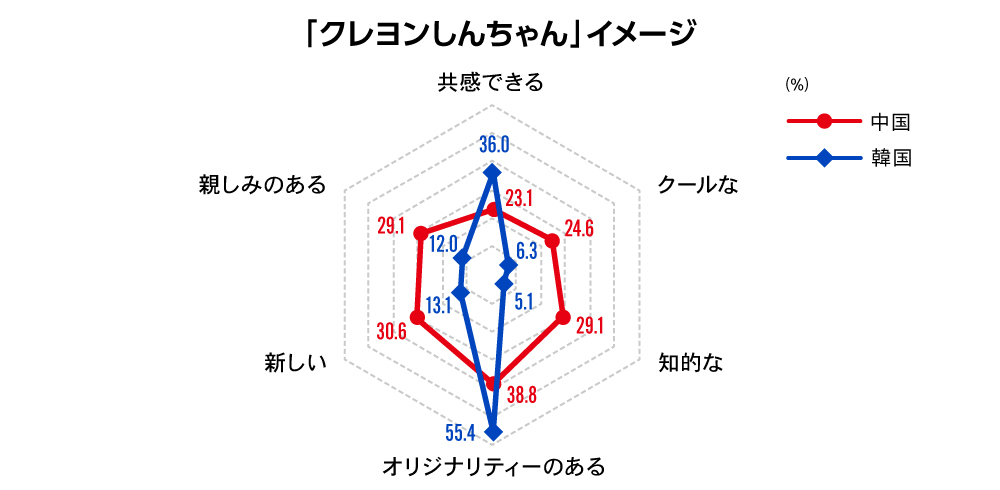
[Chart 8] Ultraman Image Chart in China and South Korea
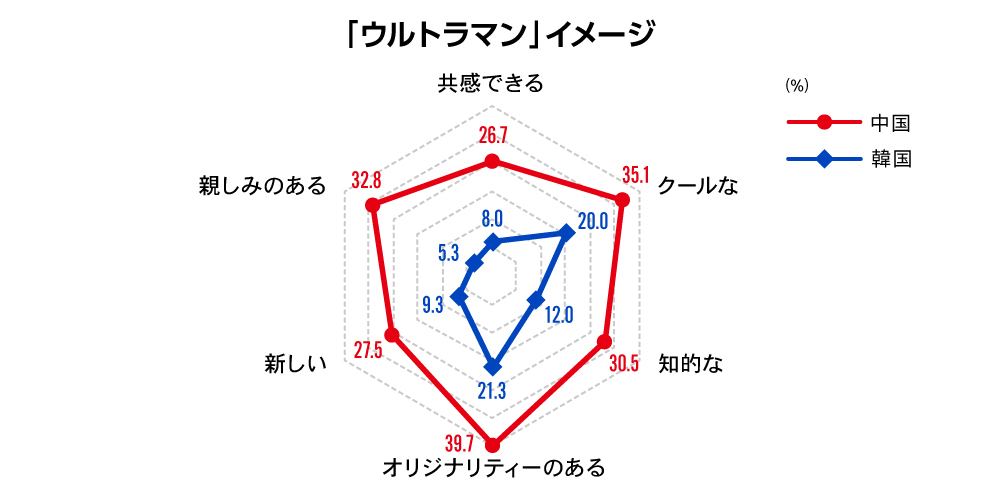
Now, let's delve deeper into the content that is characteristically popular in China and South Korea, and the reasons behind that popularity.
I apologize that this report focuses primarily on characteristics and trends observed during my own assignment in China. However, China and South Korea, both part of East Asia, share similar tendencies in terms of widely recognized content.
In addition to content recognized in both countries, such as "Detective Conan" and "Crayon Shin-chan," we will examine the image of "Attack on Titan," which is particularly well-known in South Korea and is gradually gaining popularity in China, in each country.
"Detective Conan" is recognized across a wide range of age groups in both China and South Korea, supported as "intellectual content," "new content," and "original content."
As mentioned earlier, this long-running series has reached audiences in various forms across countries. Furthermore, the recent "mystery-solving" boom in Asia likely contributes to its popularity. Experience-based event spaces, similar to Japan's popular "Real Escape Games," have gained traction in China. By 2019, approximately 1,100 mystery-solving game facilities had opened nationwide. (Source: Nikkei, December 1, 2020)
"Attack on Titan" enjoys exceptionally high recognition in South Korea, where its "originality" is highly praised. Its popularity reportedly surged in South Korea from the early serialization stages and anime broadcast debut. Beyond the work's rich world-building and appeal, the early release of its manga and anime in South Korea—ahead of the rest of the world—is likely a key factor in its enduring popularity.
Regarding "Demon Slayer: Kimetsu no Yaiba," which has seen theatrical releases worldwide and generated significant buzz (※At the time of this survey in January 2020, prior to its overseas theatrical release), while its overall recognition is not yet high, its "emotional resonance" is highly valued in China. The themes of "family and comradeship" depicted in Japanese content resonate strongly across culturally similar Asian countries. "Demon Slayer," which also features bonds between family and friends as a central theme, is expected to gain even more attention with its upcoming anime series and theatrical releases.
Next, the image of "Crayon Shin-chan" in China differs from that in Japan and South Korea, being valued for its "intellectual appeal" and "novelty." In China, where family is highly cherished, anime and manga depicting family life tend to gain popularity. While portraying family dynamics, the work's unique gags and humor-filled nature may contribute to its image and popularity as "intellectual" and "novel."
Regarding "Ultraman," it is supported as original and relatable content. Through its long-running series, the Ultraman franchise has become a "parent-child content" in China, enjoyed together by both parents and their children.
Looking at this, it becomes clear that the common keyword among popular content overall is "originality." Precisely because international broadcasting and video streaming services are widespread today, allowing viewers worldwide to access content from any country, global audiences are rediscovering the unique "originality" of Japanese content – its distinct worldviews and inherent appeal.

The "post-80s generation," driving the Chinese market, is the first generation raised on Japanese content.
Now, let's examine the background behind the popularity of these contents in China from a slightly different perspective.
When considering the background of Japanese content's popularity in China, "generational perspectives" and "historical context" are crucial viewpoints.
Particularly, the Chinese individuals in their 30s and 40s included in this survey are called the "post-80s generation" and have long been a focus within the Chinese market. They spent their childhood and youth in China during the 1990s and beyond, a period known as the Reform and Opening-up era. It was around this time that various Japanese and international content began airing in China, making them the first generation to actively embrace foreign culture. The Japanese content this "post-80s generation" watched during their childhood included Ultraman, Crayon Shin-chan, and Chibi Maruko-chan.
Subsequent generations, the "90后世代" (post-90s generation) and "00后世代" (post-00s generation), began accessing diverse global content tailored to their interests through video streaming platforms like Youku and bilibili.
[Figure 9] Characteristics of Chinese Consumers by Generation
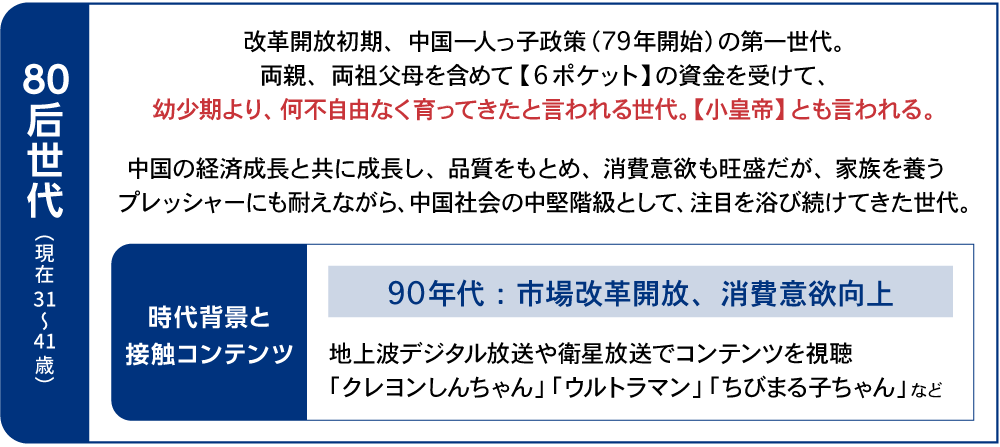
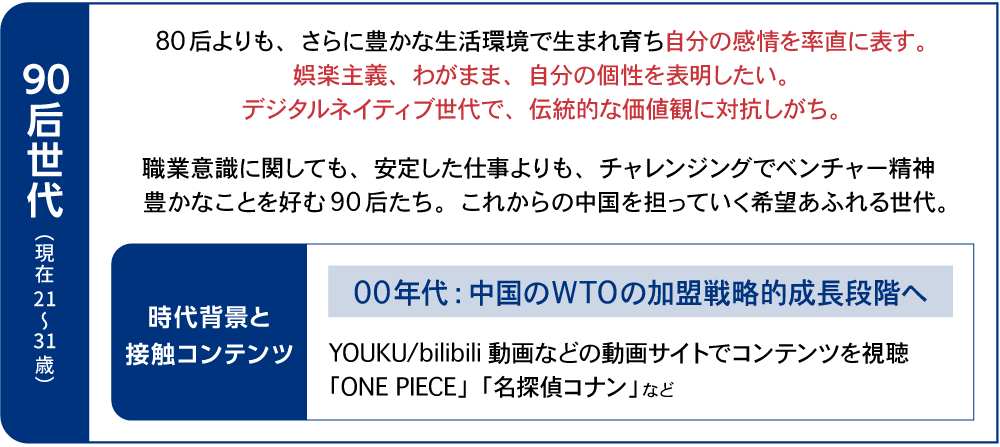

The Chinese trait of being "highly curious" and possessing "flexibility to actively adopt good things"
I was stationed in China until 2020, and I was always struck by the sheer intensity of Chinese consumers' curiosity and their passion for pursuing what they love. This strong curiosity is likely a key factor in the popularity of Japanese content in China.
For example, in China, monthly magazines themed around "Japanese culture" exist and can be seen sold in bookstores around town (Photo).

Also, during my posting in 2018, RADWIMPS held a China tour. In 2016, the film "Your Name," for which they composed the music, was released in China and achieved record-breaking box office revenue for a Japanese film. This further fueled the already significant popularity of RADWIMPS among Chinese fans, leading to this nationwide tour.
I went to see the show myself. What surprised me most during the concert was when, during famous songs like "Zen Zen Zense" and "Moshimo," the venue packed with Chinese fans erupted into a unified chorus singing in Japanese. As a Japanese person, it gave me goosebumps. It was a wildly enthusiastic concert filled with a sense of unity, with RADWIMPS members even responding to fans in Chinese (photo).
Beyond this, the manga "In This Corner of the World," depicting daily life in Hiroshima during the Pacific War, has also been translated and published in Chinese (incidentally, translated by my friend Maomao, a former Beijing Dentsu Inc. employee). Interest in Japanese content in China continues to grow.
While everyone's image and impression of China may vary, the flexibility of Chinese consumers to actively embrace quality content may also be fueling the popularity of Japanese content in China.
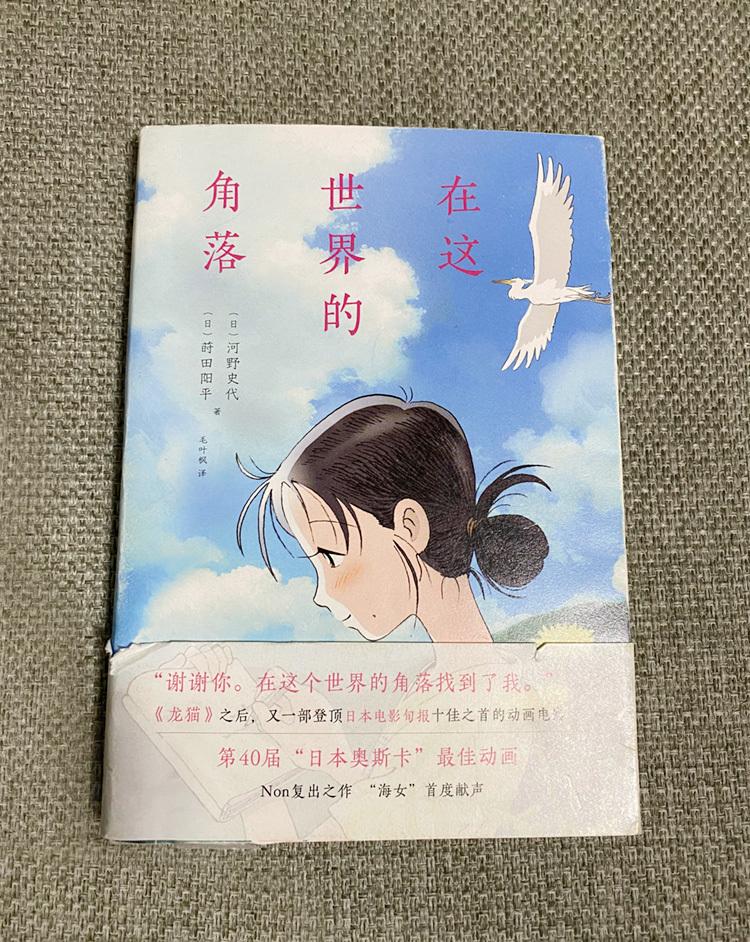

<Survey Overview>
Title: Global Content Survey
Survey Method: Internet survey
Survey Period: [Japan] December 17-24, 2020
[United States] [China] January 4–13, 2021
[South Korea] [Thailand]: January 5–14, 2021
[Vietnam] [Indonesia] January 6–16, 2021
[Malaysia] [UK] January 8–18, 2021
Participants: Men and women aged 10s to 40s in each country
Content daily consumers (Target content: Manga, anime, various games)
Survey Content: Understanding the power of Japan-centric content (manga/anime), games, and characters. Expectations toward Japan and Japanese companies, consumer values in each country, etc.
Research Organizations: Dentsu Macromill Insight, Inc., Dentsu
Was this article helpful?
Newsletter registration is here
We select and publish important news every day
For inquiries about this article
Author

Tatsuro Domon
Dentsu Inc.
From 2011, served as a Strategic Planner in the Overseas Business Division, responsible for inbound and outbound overseas marketing/communication planning. From 2012 to 2014 in Guangdong Province, China, and again from 2017 to 2020 in Beijing, China, served twice as a Planning Director/GCD on-site, leading numerous projects primarily for Japanese automotive companies and Japanese home appliance manufacturers. Since 2021, as a Team Leader within the Global Business Center, I have led planning efforts contributing to the business of clients in Japan and worldwide.

